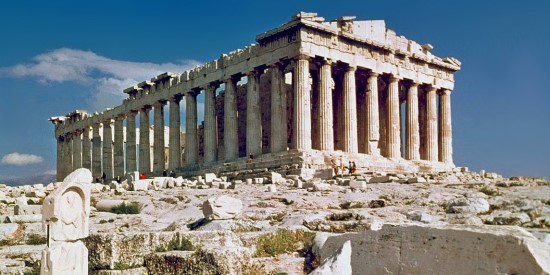Athens developed from a farming settlement situated in a defensive site. It had many beautiful buildings such as the Parthenon.
Athens had narrow streets and some of its houses were made of unbaked bricks or mud and thatched roofs.

Parthenon in Athens
There were frequent outbreaks of diseases due to poor sanitation.
The concept of democracy first developed in Athens.
At the centre of the city was a market, Agora, which was used as an assembly hall for debates.
Athenians were divided into four classes.
- First class –the richest that were the most heavily taxed.
- Second class- provided the cavalry for the army.
- Third class- provided the soldiers for the infantry.
- The fourth class- the poorest and who paid no taxes.
Factors that led to growth of Athens
- Trade and commerce. The Athenians practiced trade to obtain foods in exchange for wine, wool and olive oil.
- Security. Athens was located in an easily defensible place. The town was surrounded by water, valleys and highlands making it difficult for an external enemy to attack.
- Religious activities. The area was a worship centre.
- Accessibility and communication network. The port of Athens was located about six kilometres from the city thus making Athens a transport centre.
- Availability of water.
Functions of Athens.
- It was a cultural centre. The Greeks loved to watch play. In Athens, there was the great theatre of Epidaurus.
- An educational centre. In Athens, every person was taught how to read and write.
- Athens was a sports centre. There were Gymnasiums where boys were taught games which were developed into what came to be known as Olympics.
- Religious centre. The Parthenon temple was a great manifestation of this function. People coming to the Parthenon temple contributed to the growth of the town.


